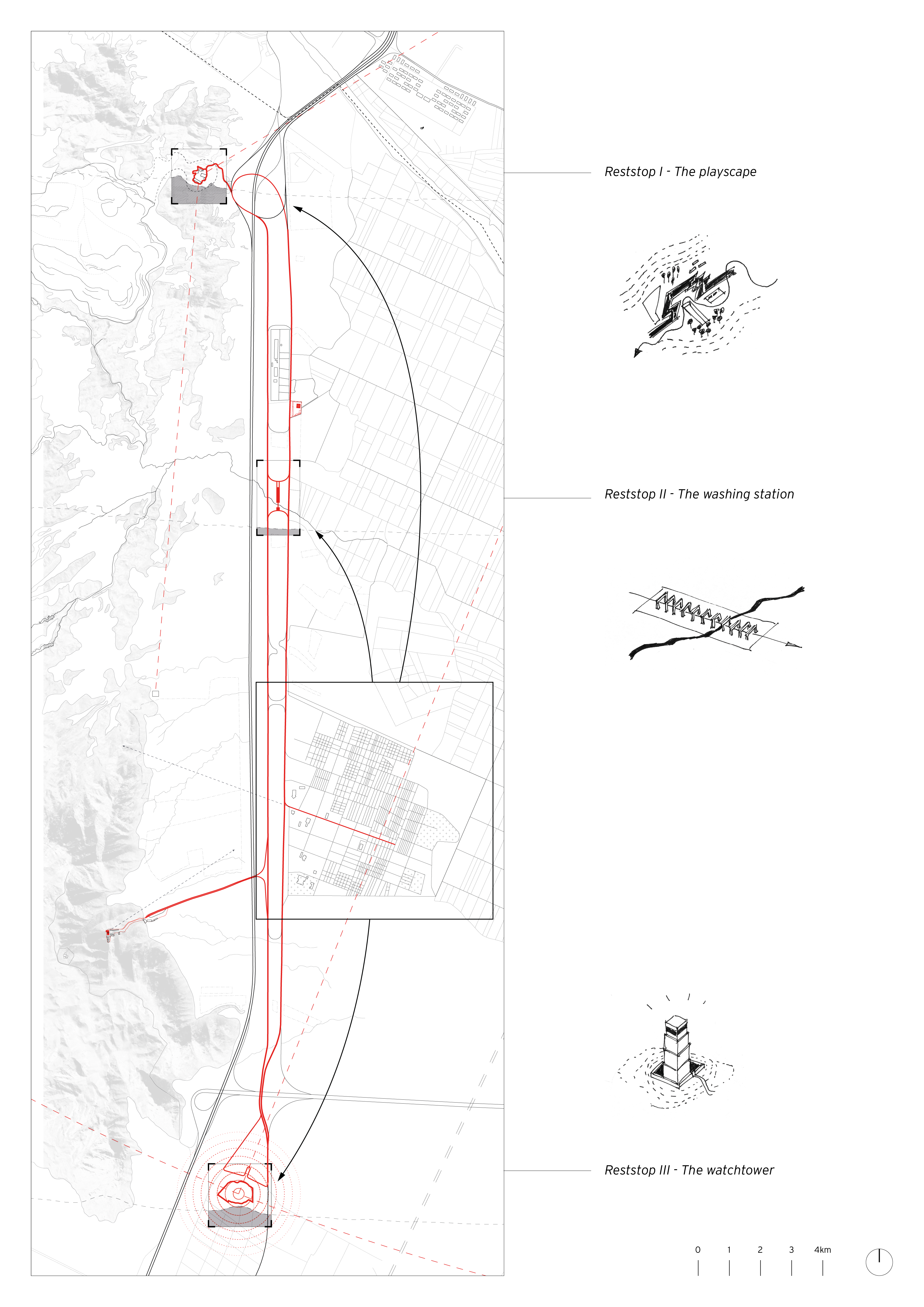The Banality of Death
Jesse Verdoes
The Banality of Death addresses the way the city of Mashhad deals with death. It is an attempt to architecturally translate and expose the tensions that arise between traditional values and the modern transformation of the burial process by the design of three extended rest-stops along the Bagcheh Highway that act as mediators with the goal of interweaving the territories of the dead and living. They are both part of the burial ritual and accommodate places for rest and leisure. The design includes a playscape at a former burial place of a persecuted minority in Mashhad where people are playfully confronted with death and its architecture; an ablution facility in between two highways that functions as the starting point for the burial ritual as well as acting as a transfer point for a mobility system, taking visitors that are not necessarily related to the burial ritual around the territory; and a watch tower situated on a forgotten site of heritage where formerly pilgrims encountered their first view towards the golden dome of the Imam Reza Shrine at the center of Mashhad, which has a role in the completion of the mourning process.
Each of the rest stops capture and emphasize a specific moment in the greenified landscape around the Bagcheh Highway. The sites are chosen with regard to their (historical) context and particular landscape conditions: their topography, soil type, vegetation, etc., which are subsequently taken into account in the technical elaboration of the project, exhibiting the potential of the programmatically fragmented peri urban landscape. It involves a combination of high-tech and low-tech solutions, making use of the machinery of the local industries, existing waste streams and other materials available on site.
The project reflects on the role of the suburban territory as a potential extension of the city where the territory of death is made visible and accessible. By exploiting the existing infrastructure of the suburban highway to extend the burial ritual beyond the boundaries of the cemetery, the project touches on a multitude of scales, ranging from the territory of the city as a whole, to the suburban territory, the highway system, the specific landscapes, and finally the, at times, intimate conditions shaped by the interventions themselves. The rest-stops bind and transform the territory of the highway, now a mainly unused greenified area, towards a ‘theme park’ of death, a Banality of Death.

